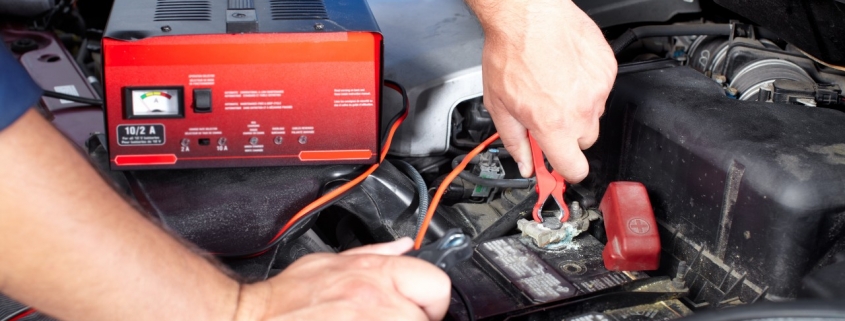Helping Your Car’s Battery Survive the Pandemic Can Prevent Major Headaches
The pandemic can be hard on your vehicle in a variety of ways, with millions of Canadians now parking their vehicles for days and weeks on end.
Cars like to be driven, and sitting unused for extended periods can be bad news for a range of vehicle systems.
If you’ll get just one pandemic-related headache from your modern car or truck, you can bet dollars to donuts it’s going to be from the battery.
When we stop using and caring for our cars, tires may flat-spot, paint may rust, and brakes may stick and seize. But before all of this, the battery in your modern vehicle begins its early downwards spiral.
This is bad news, and it may not take much.
Modern vehicles are hard on their batteries. In many owner communities, battery failure at just 2 or 3 years old is relatively common. You might be used to a battery lasting seven-10 years from an older car, but today, it seems like the lifespan isn’t what it used to be.
When the battery in a modern car starts to wear out, random and irritating problems are possible across various vehicle systems. You may see malfunction lamps or messages, sometimes several at a time. Other features or systems may spontaneously activate, or fail to. A dying battery can make your door locks act funny, your stereo system fail to boot up properly, or light up a plethora of alarming warnings in your dash.
These problems may come and go, taking various forms. Sometimes, they’ll disappear for a week, and come back. These are called electronic “gremlins”, and they’re a pain.
Point is, modern car electronics rely on a healthy and fresh battery to do their jobs properly. As the battery begins the sometimes-slow process of circling the drain, gremlins may form within the systems powered by the dying battery.
Your car’s battery is recharged every time you drive, which balances out the fact that it’s also being drawn from while it’s parked. If you’re not driving regularly, you’re not recharging the battery regularly, even though some systems are still feeding from it.
Add in the negative effects of wintertime temperatures, and there’s a solid chance your car’s battery is fighting for survival at this very moment.
How to Save Your Battery
Feeling heroic? Saving the day is a relatively simple job, here.
First, go to Home Hardware and get a trickle charger. Learn how to use it and hook it up to your battery when your car will be parked for an extended period. Doing so makes your battery more reliable, and can extend its lifespan, too. The trickle charger conditions the battery and maintains a proper charge level, making it a powerful defence against parked-car battery drain.
Always check your owner’s manual before hooking up a trickle charger. While you’re in there, look up instructions for cleaning your battery terminals, if applicable. You might find a how-to video specific to your vehicle on YouTube, as well.
The metal terminals on your car’s battery might be coated with a crusty, salt-like deposit that looks like cruddy, crystalline dirt. These deposits form on some battery terminals over time, and they’re slightly conductive—meaning they slowly kill your battery.
Cleaning these deposits is generally a simple task, but seek professional help if you’re not sure how. This is also a good time to confirm that the lead wires are properly fastened to the battery terminals, ensuring a good connection.
Finally, be sure to disconnect any chargers, USB drives or MP3 players from the vehicle when not in use. These can draw from a vehicle’s battery while it’s parked, sometimes aggressively.
If in doubt, seek professional help. A technician can quickly clean, test and inspect your vehicle’s battery and charging system if required. Consider a professional battery and charging system check-up for maximum peace of mind, it’s far less of a hassle than a no-start situation and trying to find a boost while you’re late for something.
The post Helping Your Car’s Battery Survive the Pandemic Can Prevent Major Headaches appeared first on WHEELS.ca.



